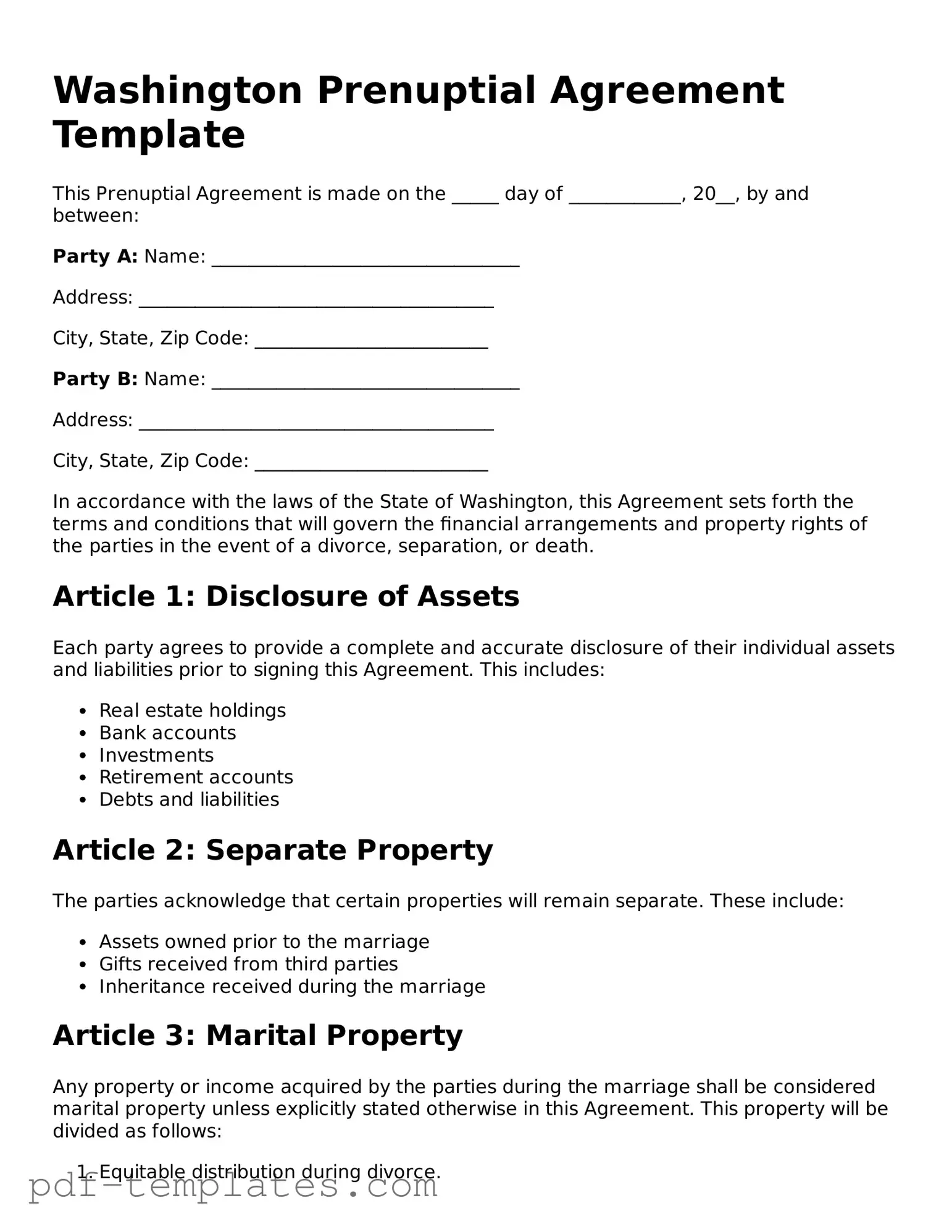The Washington Cohabitation Agreement is similar to a prenuptial agreement in that it outlines the rights and responsibilities of partners who live together but are not married. This document can specify how property will be divided in the event of a separation. Like a prenuptial agreement, it allows individuals to establish their terms in advance, ensuring clarity and reducing potential conflicts later on.
A Postnuptial Agreement serves a similar purpose to a prenuptial agreement but is created after the marriage has taken place. This document can address changes in circumstances, such as a significant increase in income or the acquisition of new assets. It provides a way for couples to renegotiate their financial arrangements, much like a prenuptial agreement does before marriage.
The Separation Agreement is another document that shares similarities with a prenuptial agreement. It comes into play when a couple decides to live apart but not necessarily divorce. This agreement can cover issues such as property division, spousal support, and child custody. Like a prenuptial agreement, it aims to clarify expectations and responsibilities, making the separation process smoother.
The Request for Authorization for Medical Treatment (DWC Form RFA) plays a vital role in the California Division of Workers’ Compensation, formalizing requests for necessary medical services following an occupational injury or illness. Accompanied by essential medical reports, this form triggers the utilization review process mandated by Labor Code section 4610. To learn more about various official documents relevant to California's healthcare and workers' compensation system, refer to All California Forms.
The Marital Settlement Agreement is often used during divorce proceedings. It outlines how the couple will divide their assets and handle any debts. While a prenuptial agreement is created before marriage, a marital settlement agreement is a post-marriage document that helps finalize the terms of the separation, providing a clear path forward for both parties.
A Domestic Partnership Agreement is similar to a prenuptial agreement in that it defines the rights and obligations of partners in a domestic partnership. This document can cover financial matters, property ownership, and other responsibilities. It ensures that both partners have a mutual understanding of their relationship, much like a prenuptial agreement does for married couples.
The Living Together Agreement is designed for unmarried couples who share a home. This document can outline how expenses will be shared, how property will be owned, and what happens if the relationship ends. Like a prenuptial agreement, it aims to prevent misunderstandings by setting clear expectations from the start.
The Trust Agreement is another document that can complement a prenuptial agreement. While it primarily focuses on how assets will be managed and distributed, it can also address concerns about financial security in a relationship. Both documents aim to protect individuals’ interests and provide a framework for handling assets, whether during the relationship or after it ends.
Finally, the Will is a crucial document that, while not directly similar to a prenuptial agreement, shares the goal of asset distribution. A will specifies how a person’s property should be divided upon their death. Like a prenuptial agreement, it allows individuals to express their wishes clearly, ensuring that their intentions are honored and minimizing potential disputes among heirs.
